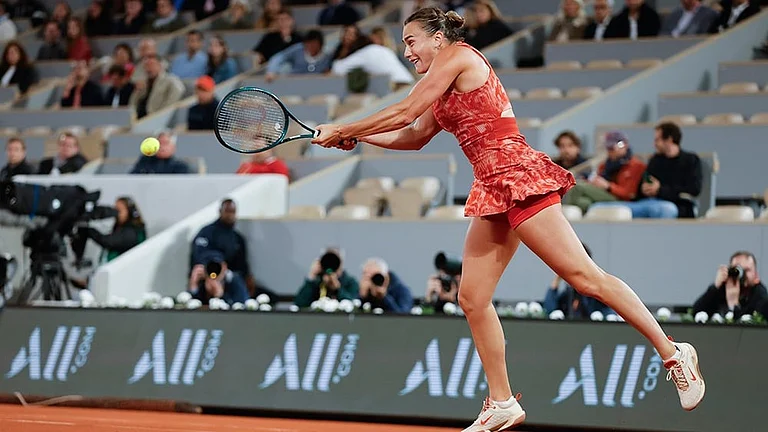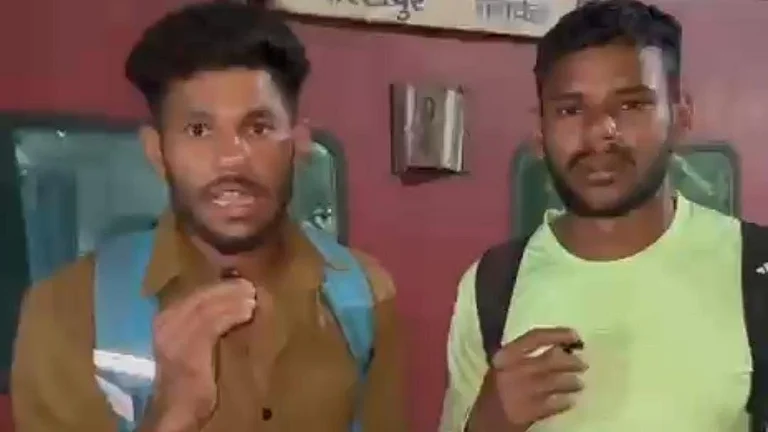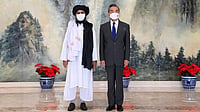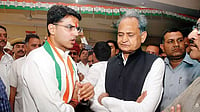There is no ambiguous provision or statute in Indian laws that legalises encounter killings. On the contrary, various Supreme Court judgments and National Human Rights Commission (NHRC) guidelines limit the use of police’s excesses. However, the ground reality is very different. Legal experts point at various cases where the victims didn’t get any justice. The glorification of extrajudicial killings by politicians also emboldens an ecosystem of lawlessness.
Data tabled in the Lok Sabha on July 26 revealed that across the country, 82 people were killed in police encounters during the 2020-2021 fiscal, which jumped to 151 during the 2021-2022 fiscal. Although the data for the year shows an uptick in encounters, India’s history since the 1990s has remained replete with instances of fake encounter killings.
Between 2000 and 2017, the NHRC registered 1,782 fake encounter cases. Similarly, between 1993 and 2009, at least 2,560 cases of encounters were brought to the notice of the NHRC. Of them, 1,224 were fake.
Arif Jwadder, a Delhi-based lawyer and activist, tells Outlook, “There are some [IPC/CrPC] sections that, depending on the circumstances, may give officers involved in encounters specific rights to deal with criminals.” The lawyer says that in most cases, police are known to misuse their privileges.
The standard explanation used by officers to justify their actions is that the killing was necessary to protect themselves from being attacked by the putative criminals, or to exercise their “right of private defence”.
According to Section 96 of the Indian Penal Code (IPC), any act done in the exercise of ‘right of private defence’ is not an offence. Nevertheless, Section 99 explicitly presages that the defence is not available for inflicting more harm than is necessary for defence. In other words, the use of force should be proportionate.

The Supreme Court, in Extra Judicial Execution Victim Families Association (EEVFAM) and Ors. Vs Union of India and Ors., states that the right of self-defence or private defence falls in one basket, and use of excessive force or retaliatory force falls in another basket. While police have the right to private or self-defence, if they go beyond these by employing excessive force or punitive measures, they become aggressors and commit crimes that are punishable by law.
“Sadly, there are times when using extreme force or retaliation results in the death of the first offender,” the lawyer says.
The Supreme Court held in the EEVFAM case that “there is a qualitative difference between use of force in an operation and use of such deadly force that is akin to using a sledgehammer to kill a fly; one is an act of self-defence while the other is an act of retaliation.”
Similarly, in Darshan Singh Vs State of Punjab and Anr, the apex court observed that, “…it is also settled position of law that a right of self-defence is only right to defend oneself and not to retaliate. It is not a right to take revenge.”
Another shield often used by police to cover up extrajudicial killings is that they opened fire because the accused was trying to evade arrest. Although this side is governed by Section 46 (3) of CrPC, it doesn’t include killing someone, unless the victim is charged with a crime that carries death or life sentence.
The Supreme Court judgment in Om Prakash & Ors Vs State Of Jharkhand & Anr., observes, “It is not the duty of police officers to kill the accused merely because he is a dreaded criminal.”
“Undoubtedly, police have to arrest the accused and put them up on trial,” the judgment further reads. “This court has repeatedly admonished trigger-happy police personnel, who liquidate criminals and project the incident as an encounter... Such killings… are not recognised as legal by our criminal justice administration system. They amount to State-sponsored terrorism,” it adds.
The saga of investigations
Since there is a thin line between exercising the right to self-defence and perpetrating retaliation or excess force, the police encounters must always be looked at with a critical eye.
A human rights activist tells Outlook, “If there’s an independent investigation into police encounters, most of them will turn out to be cases of killing using excess force or of motivated cold-blooded murder.”
In the matter of death during the course of any police action, the NHRC issued some guidelines in 2010. A statute from the list makes it mandatory to file an FIR under appropriate IPC sections whenever a particular complaint is made against the police alleging conduct of a criminal act on their part that sets out a cognisable case of culpable homicide. The guidelines recommend that the state CBCID (Crime Branch, Crime Investigation Department) or another specialised investigating agency must probe the matter.
In the landmark judgment of PUCL Vs State of Maharashtra, the Supreme Court issued 16 guidelines to be followed in the investigation of deaths following police encounters, after considering recommendations made by the Bombay high court, the counsels, NHRC and other stakeholders. One of the guidelines says that an independent investigation into the incident/encounter shall be conducted by the CID or a police team of another police station, under the supervision of a senior officer (at least a level above the head of the police party engaged in the encounter).
The guidelines also make a magisterial inquiry under Section 176 of the code mandatory. Moreover, the apex court said these “requirements/norms must be strictly observed in all cases of death and grievous injury in police encounters by treating them as law declared under Article 141 of the Constitution of India”.
A rotting ecosystem
On July 14, the Supreme Court imposed a fine of Rs 5 lakh while delivering its verdict on a petition an activist moved in 2009. Activist Himanshu Kumar and 12 other Adivasis had petitioned the apex court for a fair investigation into the 2009 Gompad massacre of Adivasis in the Sukma area of Chhattisgarh. In the violent incidents, several Adivasis were killed. Among the petitioners were the family members of those who were killed, as well as survivors with injuries.
The apex court’s judgement maintained that since the FIRs lodged by the petitioners alleging massacre by police and paramilitary forces were investigated, and that the investigating agency concluded that it was Maoists rather than the police force that had perpetrated the massacre, “prima facie, it could be said that false information was given by the first informants to the police as regards the alleged massacre by the police force”.
“The Supreme Court judgement,” says Kavita Krishnan, a human rights activist based in Delhi, “creates a precedent that might discourage survivors and witnesses in massacre instances from even filing FIRs, especially if they run the risk of being penalised for doing so in case the court cannot support their claims.”
Krishnan, calling the move contradictory to the apex court’s previous landmark judgments, says that it is worrying because this is likely to encourage the atmosphere of fear among the petitioners, activists and victims’ families who demand a fair probe into the encounter killings. “Such an ecosystem bolsters the perpetrators to kill more as they’re seemingly promised impunity,” she adds.
Several experts believe that police carry out encounters and liquidate certain people under political pressure. Indian Police Service (IPS) officer Prakash Singh, who has served as director general of police of Uttar Pradesh and Assam, tells Outlook, “I remember when I was serving as a junior officer in Uttar Pradesh. The state home minister moved from district to district and got a list prepared of people who should be bumped off.”
“The minister told police officers that the next time he came by, he would check how many from the list had been eliminated/killed,” adds Singh, who has also commanded India’s Border Security Force (BSF).
Singh says that the political sanction or approval arises out of the fact that the criminal justice system is slouching and slow. Politicians, he adds, often give unrealistic deadlines to police officers to nab the accused.
“Whenever a major crime of any kind takes place, a politician steps in and tells the police officer in charge to solve the case in 24 hours,” Singh says, adding, “In such cases, the police are caught in a bind. I’ve seen this happen a lot of times.”
Singh believes when it comes to encounter killings it is easy to put the blame on the police and get away with it, but it is important to “understand the whole political ecosystem, wherein the police have not only lost their independence, but also their autonomy”.
Police is the main strong-arm of the State and is vested with many powers. However, Swaran Ram Darapuri, a social activist, politician and ex-IPS officer, tells Outlook that the problem lies in the distribution, or rather, the over-centralisation of powers.
“In current times,” says Darapuri, “police are not able to do anything at their own discretion and will. Nowadays, even the chief of police or DGP has become an insignificant player.”
“All diktats are read out from the top by the political bosses, who manage everything,” he says, adding, “Political power in this country is becoming the supreme power. The system is moving towards authoritarianism. This is a dark ecosystem.”
Darapuri feels that expecting the rule of law to prevail under such circumstances is a far-fetched dream. “You see, many chief ministers are openly calling for encounter killings. How can you expect due process of law to be followed when the heads of states glorify police excesses and extrajudicial killings?” asks the former top cop.
It is a question, the answer to which India has been intermittently searching for since 1947.
(This appeared in the print edition as "Laws, Flaws & Fear")


























